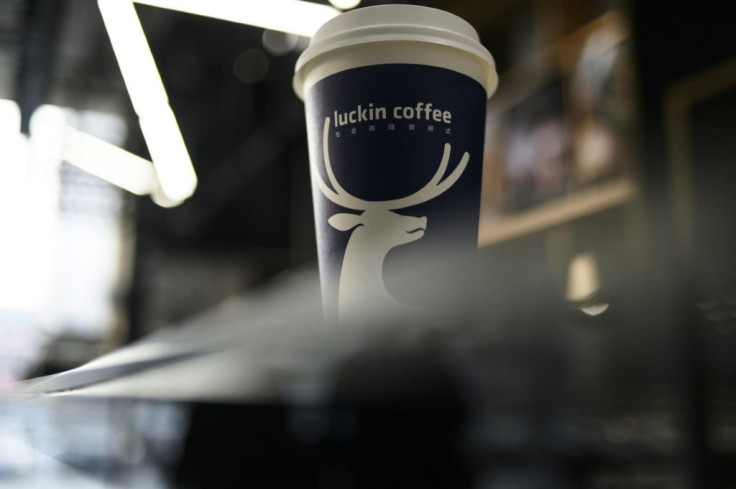Why Luckin Coffee's Fraudulent Rise And Fall Will Help Starbucks In China

Luckin Coffee's (NASDAQ:LK) rise and fall has captivated investors. In the span of 18 months, it went from a start-up with an interesting digital-focused coffee takeout and delivery business to China's largest coffee chain by store count. Its rapid growth, fueled by margin-sapping promotions, helped bring coffee to the masses in China.
This breakneck growth caused some investors to worry that Luckin Coffee would undermine Starbucks' (NASDAQ:SBUX) position in China. Yet this growth wasn't entirely genuine. Several Luckin employees -- including senior executives -- conspired to fake hundreds of millions of dollars in sales last year. That makes Luckin look far less like a threat to Starbucks in China. In fact, it looks more like a subsidized customer acquisition pipeline.
Luckin Coffee: the myth and the reality
Two years ago, Luckin Coffee operated just 624 stores. However, in the quarters leading up to and following its May 2019 IPO, the company expanded its footprint rapidly. The store count more than tripled to 2,073 by the end of 2018 and nearly doubled again to 3,680 by Sept. 30, 2019. Luckin hasn't reported an official store count since then -- in fact, it hasn't filed any financial results at all -- but its store count rose to nearly 7,000 by late May, according to Thinknum Alternative Data.
Despite adding stores at a breakneck pace, Luckin claimed that store productivity was improving, too. It reported that it sold 34.7 million freshly brewed drinks per month in the third quarter of 2019: an average of a little over 10,000 per store. That compares to 13.1 million freshly brewed drinks per month just two quarters earlier: roughly 6,000 per store on average. Not surprisingly, improvements in store productivity of this magnitude drove significant growth in store-level margins.
The secret to Luckin Coffee's incredible performance came out in early April: Much of it was fake. Luckin disclosed that rogue employees (including senior executives) had inflated revenue by about 2.2 billion yuan ($311 million) between the second and fourth quarters of 2019 by recording "fabricated transactions." This amounted to nearly half of the company's reported revenue for the second and third quarters and projected fourth-quarter revenue.
Luckin Coffee still hasn't filed its 2019 annual report. However, based on the company's estimate of how much revenue was fabricated, it appears that average sales per store declined over the course of 2019 -- particularly if you exclude sales of heavily discounted lifestyle products.
That's exactly what you'd expect. By rapidly adding stores and offering deep discounts, Luckin Coffee did drive strong sales growth (albeit not as strong as it initially reported). But this came at a cost in terms of store productivity, likely aggravating the unprofitable nature of its business model.
The addressable market opportunity
A little over a year ago, I argued that Luckin's rapid expansion could be good for Starbucks in the long run. By getting more Chinese consumers to develop a coffee habit, Luckin would expand Starbucks' addressable market in China, outweighing the impact of lower market share.
Indeed, while estimates vary, annual per-capita coffee consumption in China is quite low today: perhaps six cups. That compares to 180 cups per capita in Japan and even higher consumption in the U.S. and much of Europe. As a result, while Starbucks' market share is much higher in China than here in the U.S., it still generates about six times as much revenue in the U.S. as it does in China.
If annual per-capita coffee consumption in China were to increase to 50 cups over the next decade or so and Starbucks were to capture just 5% to 10% of that market, Starbucks' annual revenue there would surge past $10 billion -- and possibly even past $20 billion. For comparison, Starbucks' annual revenue run rate in China was around $3 billion prior to the COVID-19 pandemic.
Growing the market -- perhaps for Starbucks
Luckin Coffee capitalized on its strong (falsified) Q2 and Q3 results to raise $865 million of capital earlier this year. It issued stock at $42 per American depositary share and five-year convertible debt at a 0.75% interest rate and a $54.60 conversion price. For comparison, Luckin Coffee stock now trades for around $3.
This cash infusion allowed Luckin to open more than two thousand new stores in the first four months of 2020. (It appears to have closed some stores over the past month, though.) In the short run, at least, Luckin Coffee's fraud gave it access to capital to continue its cash-burning strategy of rapid expansion paired with deep discounts.
In effect, growth-hungry investors who were fooled by Luckin Coffee have subsidized a massive project to get Chinese consumers to develop a coffee-drinking habit. It's not clear if Luckin will be around to reap any of the rewards. It faces numerous lawsuits that could sap its cash, and it's unclear if it will be able to stem its losses anytime soon.
That makes it even more likely that some of these new coffee drinkers will eventually become Starbucks customers, enabling the coffee titan to continue its methodical growth in China. The battle between Starbucks and Luckin Coffee in China looks like one case where slow and steady wins the race.
This article originally appeared in the Motley Fool. Adam Levine-Weinberg has no position in any of the stocks mentioned. The Motley Fool owns shares of and recommends Luckin Coffee Inc. and Starbucks. The Motley Fool has a disclosure policy.





















